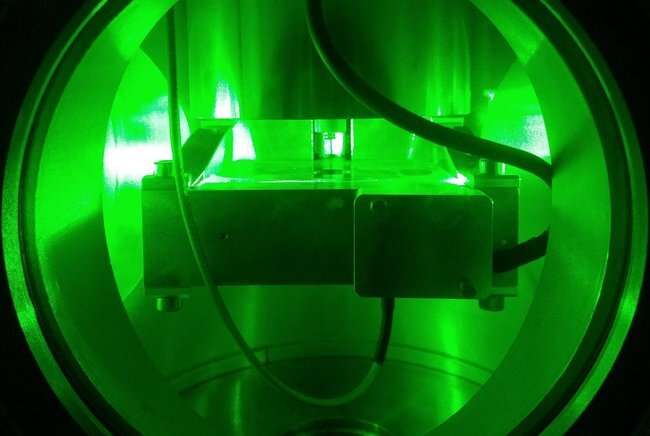
Plasmas are strongly associated with thermonuclear reactions inside stars such as the sun, but in modern society, plasmas have found application in lithographic processes and decontamination techniques. High-temperature plasmas, like those in the sun, can be quite energy-inefficient for chemical applications and degrade materials in processes. One way to address such issues is to manipulate plasmas in a low-temperature environment. Ph.D. candidate Bart Platier has developed a new plasma-based production technique using low-temperature and atmospheric pressure plasmas for illumination diffusers, which are used in lighting technologies to improve the distribution of light. Platier defends his Ph.D. thesis on June 26th.
Everything is made of matter, and matter comes in fundamental states or phases. Solids, liquids, and gasses are familiar phases to many—just think of the three phases of water. However, the fourth fundamental phase of matter is plasma, an ionized gas partially made up of charged particles. Although plasmas are commonplace in the sun, they also naturally occur on Earth in the form of lightning and auroras. Moreover, plasmas can be created in the laboratory, and are typically used for applications in lithography, air purification, spacecraft propulsion, and contamination control.
Many plasmas are produced by applying strong electric fields to a gas or heating a gas to very high temperatures. Unsurprisingly, the result of the latter approach is a high-energy, high-temperature plasma state. However, there are many advantages to using low-temperature plasmas, particularly when it comes to working with temperature-sensitive polymers without degrading the materials. For his research, Bart Platier developed a low-temperature, atmospheric pressure plasma-based method for the production of illumination diffusers.
Chasing the ideal illumination diffuser
"To produce the ideal illumination diffuser, it's imperative to monitor and control free electrons in the plasma as they greatly influence plasma properties and behavior," says Platier. For more than 70 years, Microwave Cavity Resonance Spectroscopy (MCRS) has been the method of choice for investigating free electrons in low-pressure plasmas. In MCRS, changes in the resonant behavior of an electromagnetic standing wave in a cavity enclosed by conducting walls are determined by the behavior of free electrons in the plasma.
"The drawback with MCRS is that, until now, it's only suitable for low-pressure plasmas. Thus, for my research, I have further developed the technique for atmospheric pressure plasmas," adds Platier.
Updating MCRs for atmospheric pressure
This work provides a unique insight with regards to the use of MCRS at atmospheric pressures. To validate the revisions to the technique, Platier tested different plasmas configurations. First, he considered extreme ultraviolet (EUV) photon-induced plasmas, which are important for the semiconductor industry. Testing provided valuable insight on free electron behaviors and acted as a natural transition to study atmospheric pressure plasmas.
Then Platier implemented the updated tool to study atmospheric pressure plasmas. Specifically, he studied electron density and collision frequency of electrons generated by radio-frequency fields and high-voltage pulses. These experiments showed that these plasmas produce acoustic waves that could be applied to wound healing treatments in clinical settings.
Explore further
Citation: Improved understanding of the behavior of electrons in plasmas (2020, June 24) retrieved 24 June 2020 from https://ift.tt/3dv0Y0T
This document is subject to copyright. Apart from any fair dealing for the purpose of private study or research, no part may be reproduced without the written permission. The content is provided for information purposes only.
"behavior" - Google News
June 24, 2020 at 08:29PM
https://ift.tt/3dv0Y0T
Improved understanding of the behavior of electrons in plasmas - Phys.Org
"behavior" - Google News
https://ift.tt/2We9Kdi
Bagikan Berita Ini














0 Response to "Improved understanding of the behavior of electrons in plasmas - Phys.Org"
Post a Comment